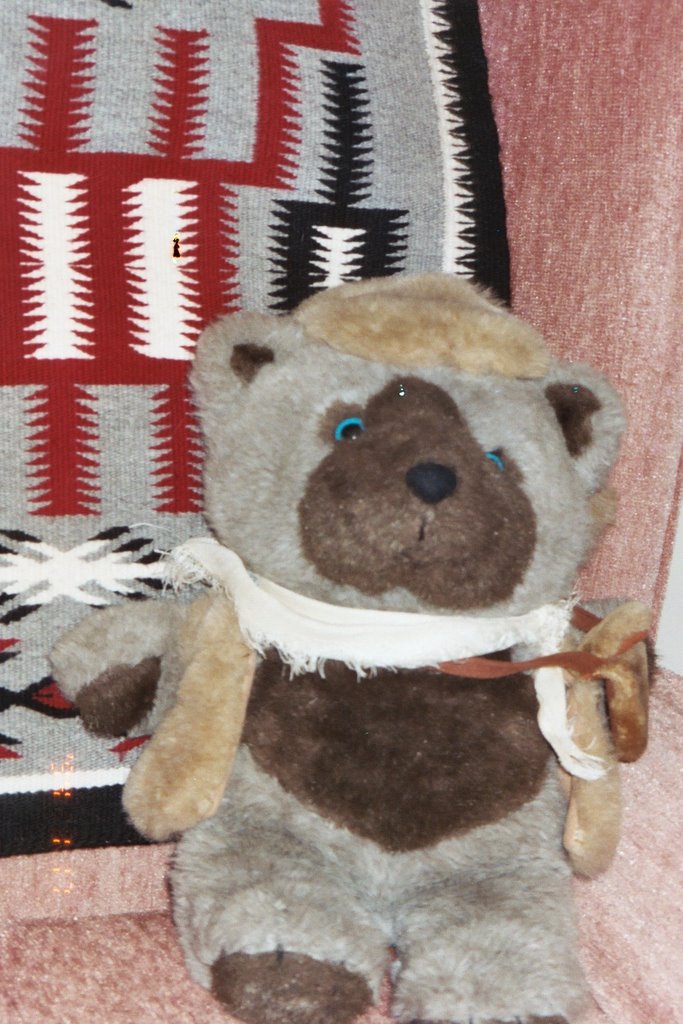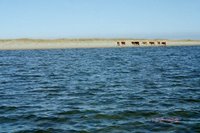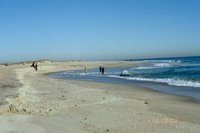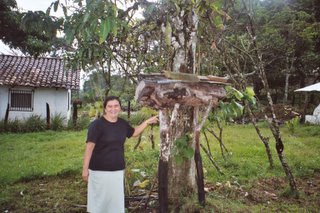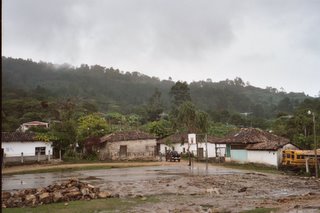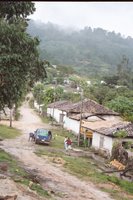
This is my 100th Post here, who'd have guessed?
 I flew home early yesterday morning and have hurriedly finished up some things before the end of the year. That being done, I took down the Christmas tree that had dried out considerably in my absence. I’ve put away the ornaments and lights, retired the train for another year, and vacuumed all the needles up (well, I won’t go that far, I’ll be vacuuming needles until it’s time to put next years tree up). Tomorrow afternoon, I’m hopping on a real train, for the run down to Chicago and then southbound to New Orleans. I’m taking some students with me and we’re volunteering for a week of backbreaking work, cleaning up of that city from Katrina. I’m not sure what we’ll find when we step off the “City of New Orleans” and into the “Crescent City” on Monday afternoon. I am also unsure if I’ll have time for blogging or if I’ll even have easy internet access. So if you don’t hear from me for a week, don’t worry, I’ll be back.
I flew home early yesterday morning and have hurriedly finished up some things before the end of the year. That being done, I took down the Christmas tree that had dried out considerably in my absence. I’ve put away the ornaments and lights, retired the train for another year, and vacuumed all the needles up (well, I won’t go that far, I’ll be vacuuming needles until it’s time to put next years tree up). Tomorrow afternoon, I’m hopping on a real train, for the run down to Chicago and then southbound to New Orleans. I’m taking some students with me and we’re volunteering for a week of backbreaking work, cleaning up of that city from Katrina. I’m not sure what we’ll find when we step off the “City of New Orleans” and into the “Crescent City” on Monday afternoon. I am also unsure if I’ll have time for blogging or if I’ll even have easy internet access. So if you don’t hear from me for a week, don’t worry, I’ll be back.The “City of New Orleans” is the only long train in America that I haven’t ridden. At one point in my life, I’d take a two-week train trip every year, taking advantage of the three stops they gave you to see new cities. I’ve ridden on the “Sunset Limited,” running just above the Mexican border through the desert southwest, the “Southwest Chief,” on the Sante Fe line across northern New Mexico and Arizona. I have made at least seven runs on the “California Zephyr,” providing a gorgeous view of the Colorado Mountains and the Sierras. And then there’s the “Empire Builder,” running across the top of our nation with views of the vast plains of North Dakota and of Glacier National Park in Montana. I’ve even traveled on some trains that are now defunct: the “Desert Wind” that rolled from Salt Lake City, through Las Vegas on its way to LA, and the Pioneer, that broke of the California Zephyr at Denver and raced across Southern Wyoming to Ogden, Utah, then northwest to Portland.
On the Eastern side of the country, I’ve ridden the Pennsylvanian many times from Pittsburgh to Philadelphia, travelling across the great horseshoe bend west of Altoona. I’ve also taken multi-rides on the “Capitol” from Chicago to Washington and the “Lake Shore Limited” that hugs the Great Lakes as it runs from Chicago to Washington following New York Central’s “20th Century Limited” route. One of my favorite rides was taken in October on the Cardinal, from Chicago to Charlottesville, Virginia. Its tracks snake their way through the deep valleys of West Virginia, along the New River, passing abandoned coal towns. The Fall colors was just a bit before peak when I made this run. I’ve also been blessed to having had opportunities to ride the north-south trains. The Silver Star and Meteor run down to Florida, the Cresent to Atlanta (It goes on to New Orleans) and the Coast Starlight that rolls down the West Coast from Seattle to Las Angeles. There’s a wonderful section on this route, a hundred or so miles between Oakland and Las Angeles, where you can look out your window and see the Pacific surf below you. And there’s the Texas Eagle that runs across Texas and up to Chicago, stopping at St. Louis.
Now, at last, I’ll get the chance to ride the train Arlo Gutherie made famous when he recorded Steve Goodman’s song, “The City of New Orleans.”
Riding on the City of New Orleans, Illinois Central Monday morning rail
Fifteen cars and fifteen restless riders,
Three conductors and twenty-five sacks of mail.
All along the southbound odyssey The train pulls out at Kankakee
Rolls along past houses, farms and fields.
Passin' trains that have no names, Freight yards full of old black men
And the graveyards of the rusted automobiles.
Good morning America how are you?
Don't you know me I'm your native son,
I'm the train they call The City of New Orleans,
I'll be gone five hundred miles when the day is done.
All Aboard! (And may you experience many blessings in the New Year!)
Pictures from http://www.mardigrascoconuts.com/News_Pages/Articles/Amtrak_Mgtrain.htm
